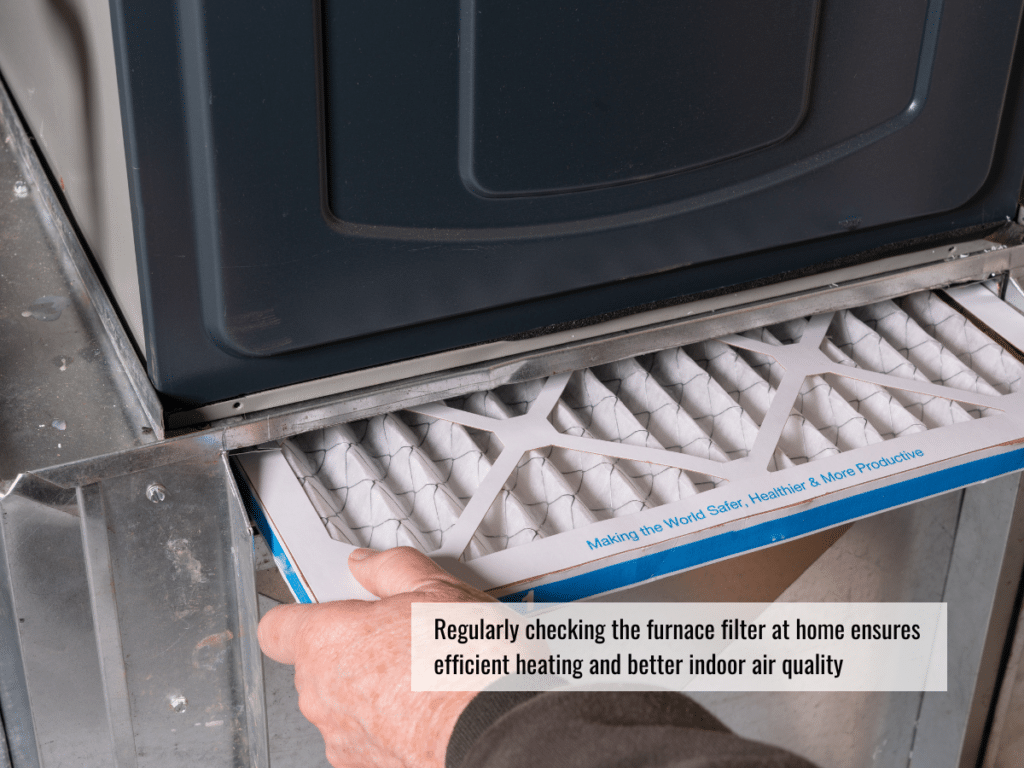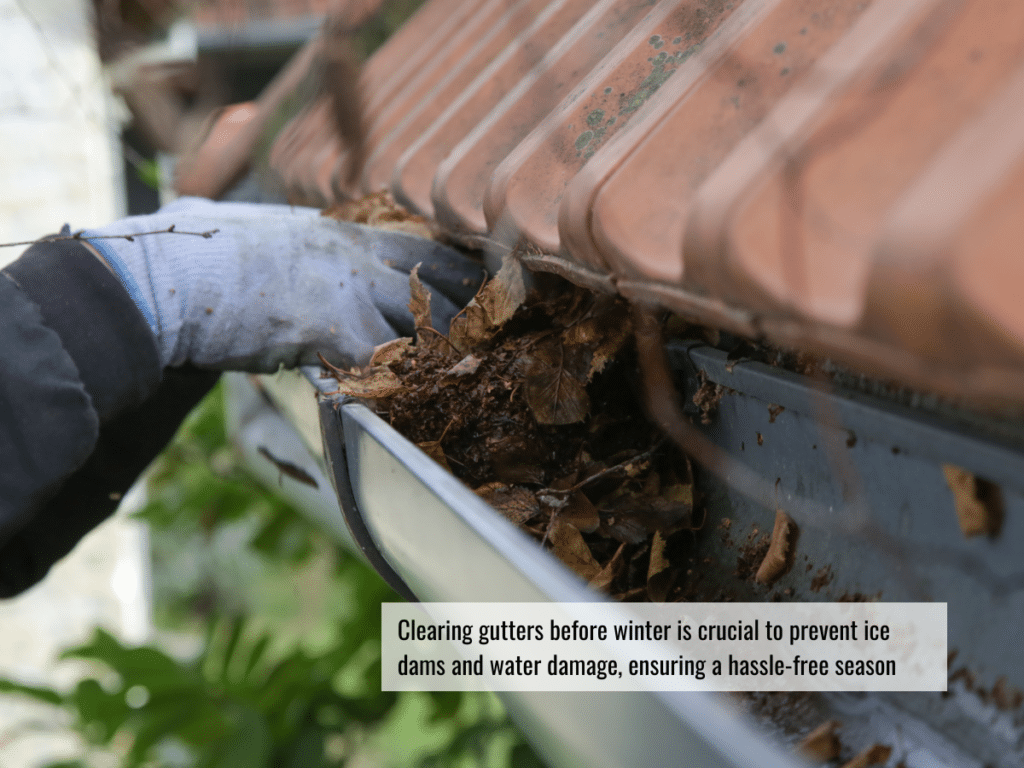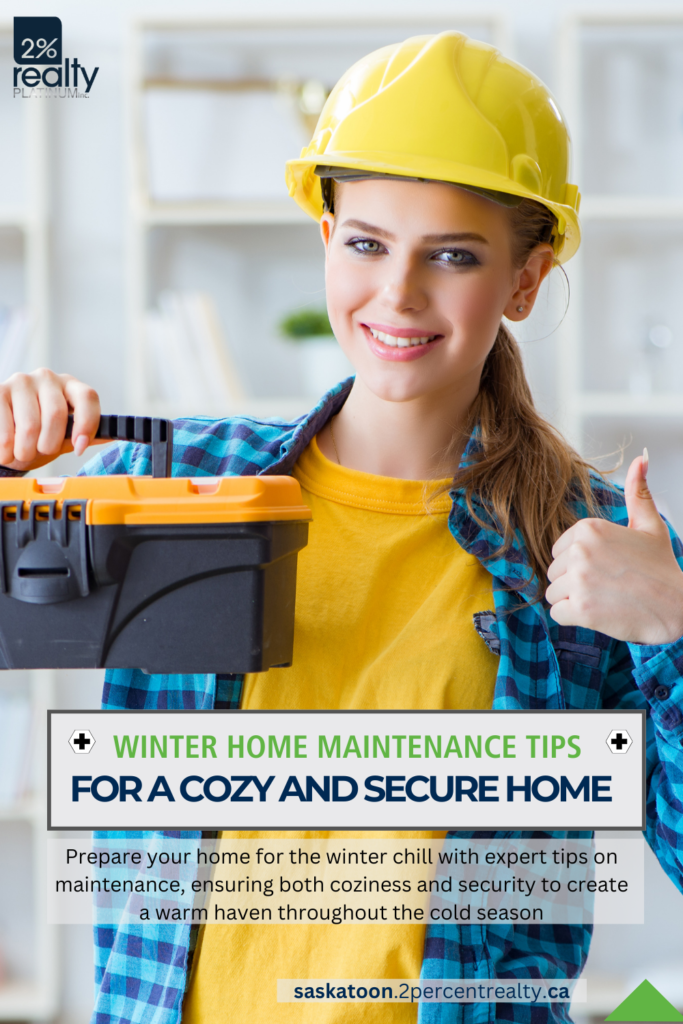If you live in Saskatoon, or anywhere in Saskatchewan for that matter, you know the winters here are no joke. Winter makes everything hard, and home maintenance is no different. From freezing temperatures to heavy snowfall, there’s always something to prepare for.
As a homeowner, there are a number of general winter home maintenance items you want to ensure you’re looking after in order to look after your home, and save yourself a lot of money and headache in the long run. Afterall, there is nothing worse than having a furnace go down when it’s -45 on a Sunday night.
Keep reading to discover 11 important maintenance tips or use the table of contents to jump around to the section you’re most interested in.
1. Insulate Windows and Doors
Winter’s icy fingers can creep through even the tiniest gaps. Conduct a meticulous check around windows and doors for drafts. Seal any openings with weatherstripping—a material made of rubber, foam, or vinyl. This simple yet effective step not only keeps the cold at bay but also helps in energy efficiency, reducing heating costs and ensuring a cozy living space.
2. Furnace Check-Up
Your furnace is the unsung hero of winter comfort. Schedule a professional inspection to ensure it’s in peak condition. Depending on what type of furnace you have, you may even have a regular maintenance package included with your purchase/rental from the supplier.
It’s also important to regularly replace the filter in your furnace throughout the year to maintain optimal efficiency. How often you need to replace the filter changes based on the type and size of the filter. When in-doubt, change it every 3 months.

A well-maintained furnace not only keeps your home warm but also contributes to long-term energy savings.
3. Protect Pipes from Freezing
Frozen pipes are a winter nightmare, causing potential damage and massive inconvenience. Especially in older houses, it’s not uncommon to have pipes in unheated areas like a basement crawlspace.
While they typically won’t freeze because there is enough warmth inside the house, if it gets cold enough (and in Saskatchewan it does) freezing does happen. You’ll know it’s the case when you go to turn on the tap and nothing happens.
Insulating those pipes is your best defense against freezing. You can also allow a small, continuous stream of water to flow through faucets during extremely cold nights to prevent freezing, but obviously that has its own downside.
If you plan to be away, consider draining or winterizing your plumbing system to avoid unpleasant surprises when you get home.
4. Clear Gutters and Downspouts
Snow and ice can wreak havoc on your gutters, leading to ice dams and water damage. Cleaning your gutters of leaves and debris is best done as soon as the leaves are finished falling from the trees in late fall.
Keeping your downspouts and gutters clear of debris helps to prevent blockages that cause problems down the road.

Downspouts need to direct water away from your home’s foundation to avoid slippery ice patches and potential foundation issues. Downspout extensions can help direct water further away from your home.
Having some ice melt on hand for any drips or pooling areas is always a good idea too. There are plenty of options to choose from and some are even pet friendly.
Not surprisingly, Ice Melt fundraisers have become quite popular in our neck of the woods. You can always check with your local community to see if anyone is running a fundraiser to help out an organization close to you.
5. Roof Inspection
Heavy snowfall in cold regions can take a toll on your roof. Inspect it for damaged or missing shingles. Trim overhanging branches to prevent the accumulation of heavy snow and ice.
If uncertain about your roof’s condition, consult with a professional to address potential issues before they escalate.
6. Check Detectors and Alarms
If you only do two things on this winter home maintenance list, this is one of the most important (the other is number 11). Increased use of heating appliances during winter necessitates the proper functioning of smoke detectors and carbon monoxide alarms.
In newer houses these will be hardwired but in many older homes they are battery operated.
If your detectors are not hard-wired, change batteries regularly and test these devices to ensure they provide early warnings in case of emergencies. Check the expiry date on each device as well. These simple steps are critical and can be a lifesaver.
7. Winterize Outdoor Faucets and Sprinkler Systems
Outdoor water sources are often overlooked. Turn off and drain outdoor faucets to prevent freezing. If you have an irrigation system, ensure it’s winterized to avoid burst pipes, saving you from costly repairs in the spring.
8. Test Winter Equipment
Before the first heavy snowfall, ensure your snowblower and shovel are in excellent working condition. Stock up on ice melt or sand to keep walkways and driveways safe. Having these essentials on hand simplifies snow removal when needed.
If shoveling has become too much for you, there are plenty of snow removal companies throughout the city. Your neighbourhood Facebook page can be a great source for finding a teenager looking for a snow removal job as well.
9. Prepare for Power Outages
Winter storms can lead to power outages. Be prepared with essentials like flashlights, batteries, water, and non-perishable food items. Consider investing in a generator for backup power, especially if you’re in a rural area which is prone to extended outages.
In Saskatchewan you can report any power outages to Saskpower online.
10. Plan for Absences
If your winter plans involve an extended absence, take extra precautions. Set your thermostat to a low but safe temperature to prevent freezing. Ask a trusted neighbor or friend to check on your home periodically, ensuring everything remains in order.
Check out our blog post on Keeping Your Home Safe While You’re On Vacation for more tips and ideas!
11. Clear Snow Away From Your Furnace Vent
With the amount of snow we get, it’s easy for snow to accumulate around the pipes on the exterior of your home. This can become very dangerous because it can prevent proper ventilation which can lead to a buildup of carbon monoxide in your home. It also stops your furnace from functioning properly, which nobody needs at this time of year!
Be sure to regularly check your exterior vents and exhaust pipes to ensure there are no blockages. If you do find snow accumulating, try to clear it out with your hand instead of a shovel, as a shovel can damage the plastic in the cold weather.
By diligently following these winter home maintenance steps, you’ll not only guarantee a warm and cozy living space but also protect your home and family from the challenges that winter weather brings. Stay warm and safe out there friends. Spring will be here…eventually!
What other winter home maintenance items do you recommend doing ahead of the winter season? Comment below and tell us.
What’s Your Home Worth? Click below for a Complimentary Home Evaluation.

